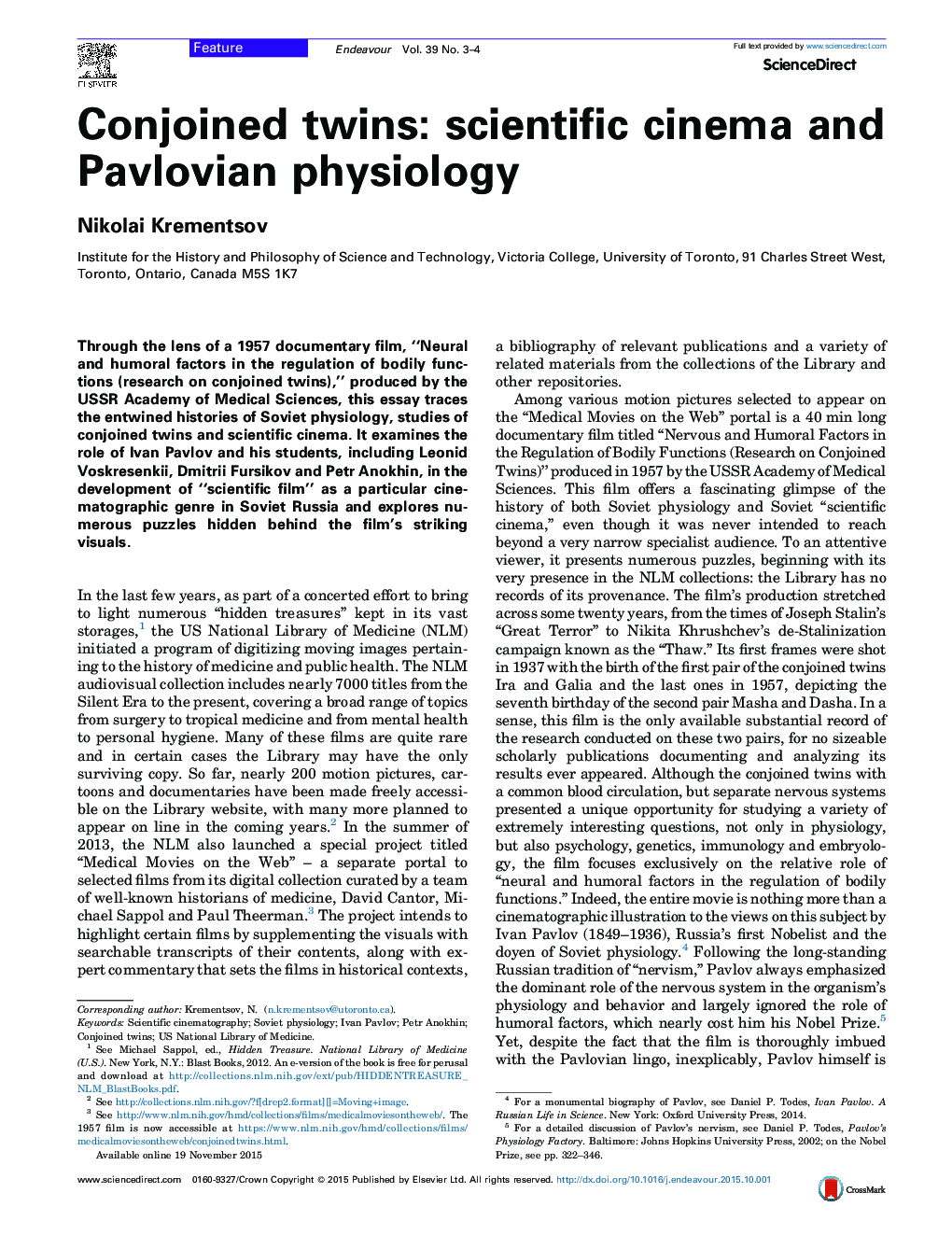| Article ID | Journal | Published Year | Pages | File Type |
|---|---|---|---|---|
| 1157480 | Endeavour | 2015 | 11 Pages |
•Cinematography offered physiologists a new tool both to record and to popularize their research.•A variety of social, cultural, and scientific factors shaped the use of this tool by Soviet physiologists from the 1920s through the 1950s.•The 1957 film “Research on Conjoined Twins” is used to illustrate some of these factors.
Through the lens of a 1957 documentary film, “Neural and humoral factors in the regulation of bodily functions (research on conjoined twins),” produced by the USSR Academy of Medical Sciences, this essay traces the entwined histories of Soviet physiology, studies of conjoined twins and scientific cinema. It examines the role of Ivan Pavlov and his students, including Leonid Voskresenkii, Dmitrii Fursikov and Petr Anokhin, in the development of “scientific film” as a particular cinematographic genre in Soviet Russia and explores numerous puzzles hidden behind the film's striking visuals.
